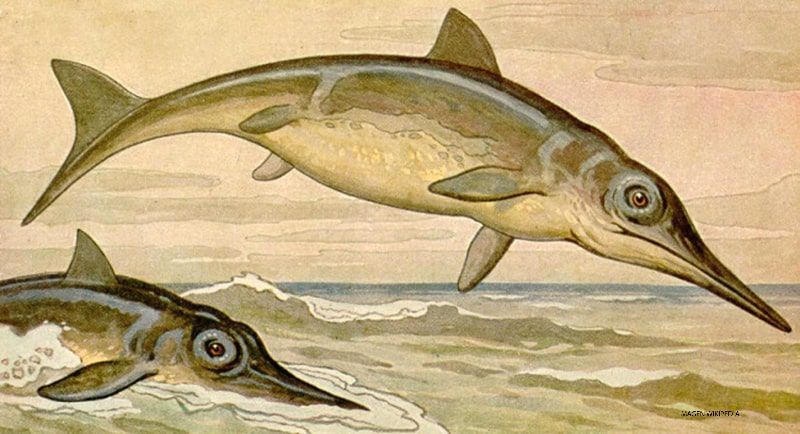The most relevant aspect of the ichthyosaur found in England
It is rare to find such a complete and well-preserved specimen. It will take up to two years to prepare the fossil in the laboratory and to have the first results.

The fossil of a large marine reptile found a few days ago in a lagoon near London, England, could provide new information on the group of ichthyosaurs, present on the planet 250 million years ago and disappeared approximately 93 million years ago, according to Jair Israel Barrientos Lara, professor at the Faculty of Sciences and doctoral student at the Institute of Geology (IG) of the UNAM.
These marine reptiles were large animals, similar to cetaceans such as whales, killer whales, or dolphins in their shape, and distant from them in their evolutionary origin. Although today they are extinct, they had a wide distribution and their remains have been found in Europe (Germany and England), America (United States, Mexico, Colombia, and Argentina), and Oceania (Australia), said the paleontologist.
"The most relevant thing about the ichthyosaur found in England and which was reported a few days ago is its large size, about ten meters long, as well as the completeness of the fossil, which includes the head, spine, and part of a fin," he said.
"This finding that has been published in recent days is almost a complete specimen, it has the entire spine and in the images, you can see that the specimen is almost complete, that is interesting because it reduces the degree of interpretation and has certainty," he said. The large size will allow experts not to speculate about the size of the animal, and helps to be certain about certain characteristics of the specimen, he added.
The weight of its skeleton is estimated at one ton and the specimen is the largest and most complete found in England, the site where the first known ichthyosaur was found at the end of the 19th century. Barrientos Lara reported that the treatment of the fossil must be extremely careful so as not to affect the vestige. "Often these specimens are covered with plaster to be able to preserve them and transfer them to the laboratory, where a detailed cleaning and study process begins, which can take up to two years to have the first results," he said.

About the site in which he found, the university specialist emphasized that it is a lagoon, which in times of the ichthyosaur was a deep sea. "The animal is eminently marine and the rocks where it was found are also marine," he said. He explained that many times paleontologists find fossils in places that are arid zones or forests, but which were seas in very distant times. Therefore, paleontology also describes the environment in which the species were found.
He considered it very feasible that more ichthyosaur fossils are found in the same area because it means that the environment of the site was propitious for the preservation of the specimens. For Barrientos Lara, paleontology requires deep dedication, passion for what one does, patience, and a lot of perseverance.
So far, he has already participated in the discovery of an ichthyosaur fossil in Durango, which after his doctoral studies was found to be a new genus, called Acuetzpalin carranzai, or water lizard in Nahuatl.




